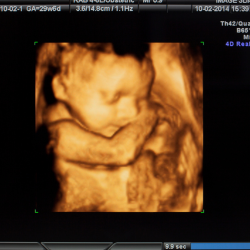Pelvic USG (TVS) - 2D/3D/4D
Advanced ultrasound imaging for pelvic and gynecological health.
Pelvic USG (TVS) - 2D/3D/4D
Pelvic Ultrasound (TVS) is a diagnostic imaging technique used to evaluate the uterus, ovaries, and other pelvic structures. It provides detailed imaging for gynecological assessments, infertility evaluations, and pregnancy monitoring.
Who Needs It?
-
- Women with irregular periods or menstrual disorders.
- Patients with pelvic pain, fibroids, or ovarian cysts .
- Individuals undergoing fertility treatment or ovulation tracking .
- Pregnant women requiring detailed fetal and uterine evaluation .

Uses of Pelvic USG (TVS)
Gynecological Assessment
Detects fibroids, polyps, ovarian cysts , and endometrial abnormalities.
Fertility & Ovulation Tracking
Monitors follicle development, ovulation, and uterine lining .
Pregnancy Monitoring
Evaluates early pregnancy, placental position, and fetal growth.
Preparation for Pelvic USG (TVS)
N
For abdominal ultrasound , drink plenty of water and keep a full bladder before the scan.
N
For transvaginal ultrasound (TVS) , an empty bladder is recommended for better imaging.
N
Wear comfortable, loose clothing for convenience during the procedure.
N
Avoid using vaginal creams or tampons on the day of the test.
N
The procedure is painless and safe , usually taking 15-30 minutes .
Frequently Asked Questions (FAQs)
What is the difference between abdominal and transvaginal ultrasound?
Abdominal ultrasound is performed externally with a full bladder, while transvaginal ultrasound (TVS) is done internally for clearer imaging of pelvic structures.
Is transvaginal ultrasound (TVS) painful?
The procedure is not painful , but some women may experience mild discomfort. It is safe and provides high-accuracy imaging.
Can pelvic ultrasound detect pregnancy?
Yes, pelvic ultrasound can confirm early pregnancy and monitor fetal growth.
How should I prepare for a pelvic ultrasound?
For abdominal ultrasound , drink plenty of water to maintain a full bladder. For TVS , empty your bladder before the procedure.
